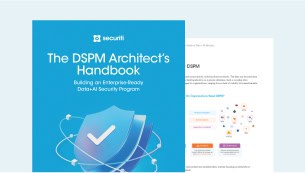The escalating integration of AI into organizational processes has heightened the need for robust risk management frameworks. A whopping 63% of organizations intend to adopt AI globally within the next three years, and with the AI market projected to contribute $15.7 trillion to the global economy by 2030, there’s a strong need for organizations to implement frameworks such as the National Institute of Standards and Technology (NIST) AI Risk Management Framework (AI RMF) and manage AI risks.
NIST AI RMF provides organizations with a structured approach to identifying, assessing, and mitigating AI-related risks. It ensures that AI systems are valid and reliable, safe to use, secure and resilient against evolving threats, accountable and transparent, explainable and interpretable, privacy-conscious, and without any biases.
This guide explains how organizations can implement the NIST AI RMF and build trust in their AI applications to align them with evolving regulatory requirements and societal expectations.
Understanding the NIST AI RMF
NIST AI RMF is a comprehensive framework divided into two – Part 1 (Foundational Information) and Part 2 (Core and Profiles). The Core is composed of four functions:
- Govern - A cross-cutting function that is dispersed throughout the AI risk management process and enables the other functions of the framework. The Govern function incorporates policies, accountability structures, diversity, organizational culture, engagement with AI actors, and measures to address supply chain AI risks and benefits.
- Map - Provides the context to frame risks related to an AI system, allowing categorization of the AI system, comparing the costs, benefits, and appropriate benchmarks, and accounting for impacts on individuals and groups.
- Measure - Employs quantitative, qualitative, or mixed-method tools, techniques, and methodologies to analyze, assess, benchmark, and monitor AI risk and related impacts. It identifies appropriate methods and metrics, evaluates the AI system for trustworthy characteristics, and gathers feedback about the efficacy of the measurement.
- Manage - Allocates risk resources to mapped and measured risks on a regular basis and as defined by the Govern function. It prioritizes AI risks based on the Map and Measure functions, strategizes ways to maximize AI benefits and reduce harm, manages risks from AI risks and benefits from third-party entities, and documents risk treatments.
These high-level functions are divided into subcategories within each category. By integrating these components, the NIST AI RMF helps organizations systematically address AI-related risks, promoting the development of secure, reliable, and ethical AI systems.
Getting Started with NIST AI RMF Implementation
Implementing the NIST AI RMF isn’t a one-step process. Instead, it requires a collaborative approach from various stakeholders across the organization to manage risks associated with AI systems. The process begins with:
- analyzing existing AI systems and determining key areas of risk
- establishing a cross-functional implementation oversight team
- determining precisely what the implementation should accomplish
- defining clear organizational goals and aligning AI RMF strategies accordingly
- gaining an in-depth understanding of the AI RMF guidelines, principles, and how the framework applies to your organization
- conducting comprehensive risk assessments to identify potential risks and vulnerabilities in AI systems
- assessing multiple factors, including but not limited to data integrity, algorithmic transparency, and potential biases
- implementing robust risk management strategies that include strong governance frameworks, transparent accountability mechanisms, and regular monitoring procedures
- engaging in employee training and educating stakeholders across the organization
- empowering those directly responsible for implementing the framework
- fostering a culture of continuous improvement and resilience, ultimately leading to more reliable and ethical AI applications.
Step-by-Step Implementation Process
Step 1: Context Establishment
In order to establish the parameters and limits of AI applications, it is essential to precisely identify the organizational tasks and objectives that the AI system will be tasked with accomplishing. This entails determining the operational environment, the audience it serves, the types of data utilized, and the desired results.
Meanwhile, it is crucial to understand and effectively communicate the risk tolerance of the organization. This requires determining the level of risk that the organization is prepared to assume in pursuit of its objectives and informing all stakeholders of this threshold.
By establishing uniformity between AI applications' limits and the organization's risk tolerance, organizations can ensure a sustainable strategy that optimizes advantages while reducing potential risks.
Step 2: Risk Assessment
Comprehensive risk assessments, employing methodologies such as failure mode and effects analysis (FMEA) – a broadly followed approach for identifying and mitigating threats are among the techniques utilized to identify and evaluate risks in AI-related applications. These methodologies facilitate the detection of possible risks and susceptibilities associated with data integrity and algorithmic biases.
Additionally, tools such as risk matrices and decision analysis frameworks are very helpful in prioritizing risks. These tools allow organizations to prioritize risks by ranking them according to probability and effect, ensuring that the most notable threats are dealt with first.
Step 3: Risk Management/Response
Identifying AI risk is one thing; establishing a robust risk response strategy is another. Risk management and response refer to identifying, assessing, and mitigating potential risks associated with the development and deployment of AI systems. Organizations must implement strong security measures, ensure AI is transparent and explainable, abide by ethical standards, and closely monitor its performance.
Step 4: Implementation
Risk management practices must be ingrained throughout the AI lifecycle. One best practice is to establish strong governance frameworks that coordinate risk management with AI development and deployment processes.
Furthermore, all stakeholders must be involved in implementing the risk management framework. This helps trickle down a risk-aware culture and improves the organization's capacity to identify and manage evolving risks. By ensuring that risk management is an ongoing, dynamic aspect of AI operations, this integrated approach builds more reliable and robust AI systems.
Step 5: Continuous Monitoring and Improvement
No such process or practice is foolproof. With humans being the weakest link in the cybersecurity chain and cybercriminals always one step ahead, the successful implementation of the NIST AI RMF comes down to continuous monitoring and improvement of your privacy and risk management practices.
It’s imperative that organizations periodically engage in risk assessments, overall AI system audits, feedback from diverse teams, and benchmarking practices and results against industry standards.
How Securiti Can Help
Securiti’s Data Command Center enables organizations to comply with the NIST AI RMF by securing the organization’s data, enabling organizations to maximize data value, and fulfilling an organization’s obligations around data security , data privacy, data governance, and compliance.
Organizations can overcome hyperscale data environment challenges by delivering unified intelligence and controls for data across public clouds, data clouds, and SaaS, enabling organizations to swiftly comply with privacy, security, governance, and compliance requirements.
Request a demo to witness Securiti in action.












































